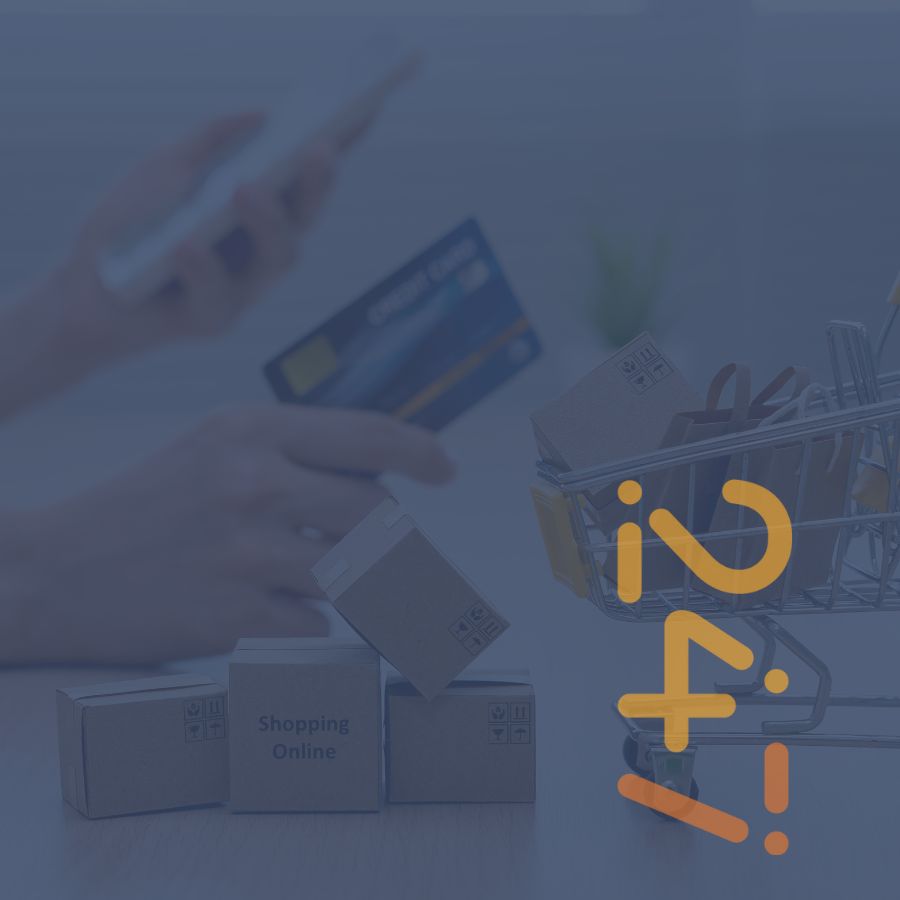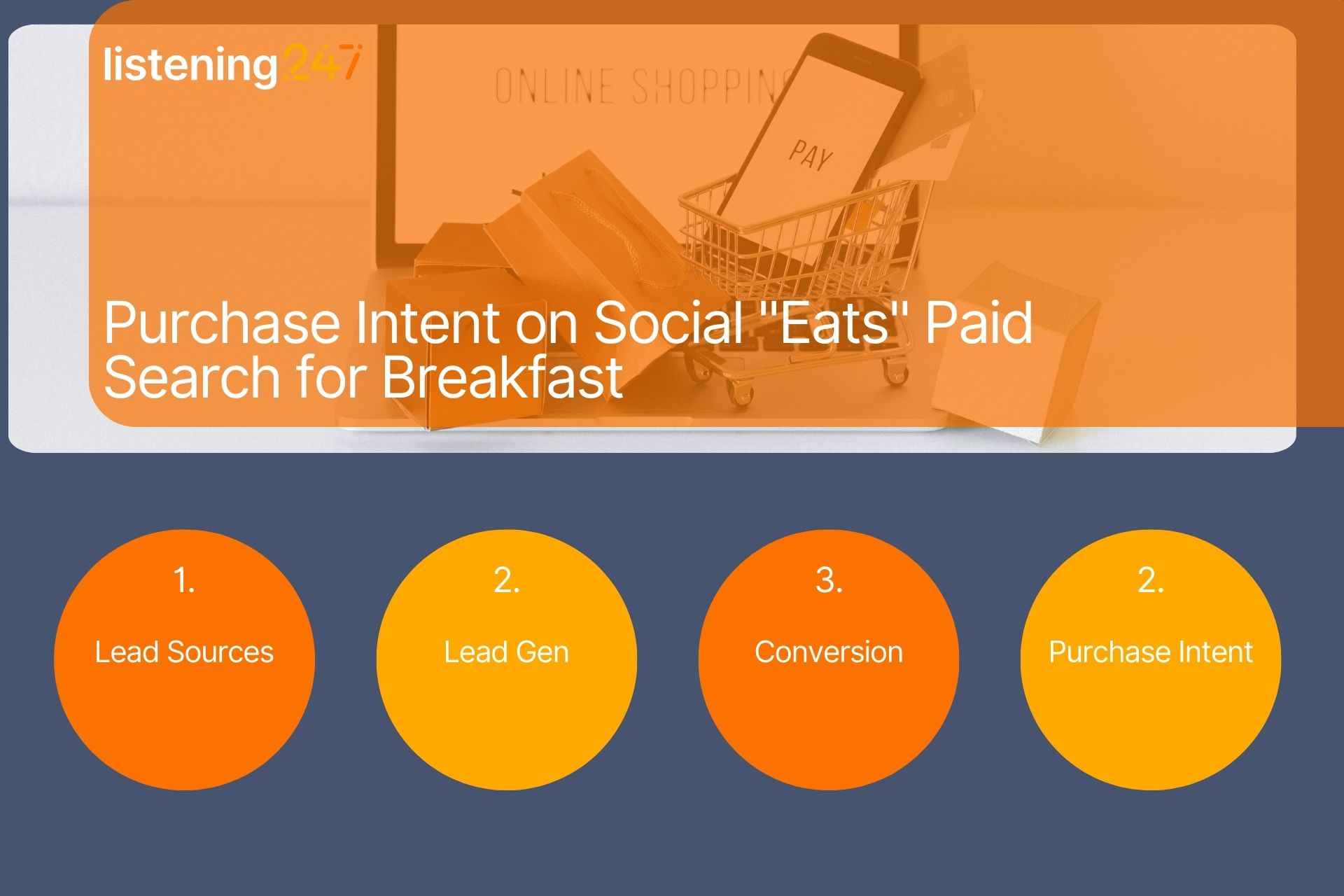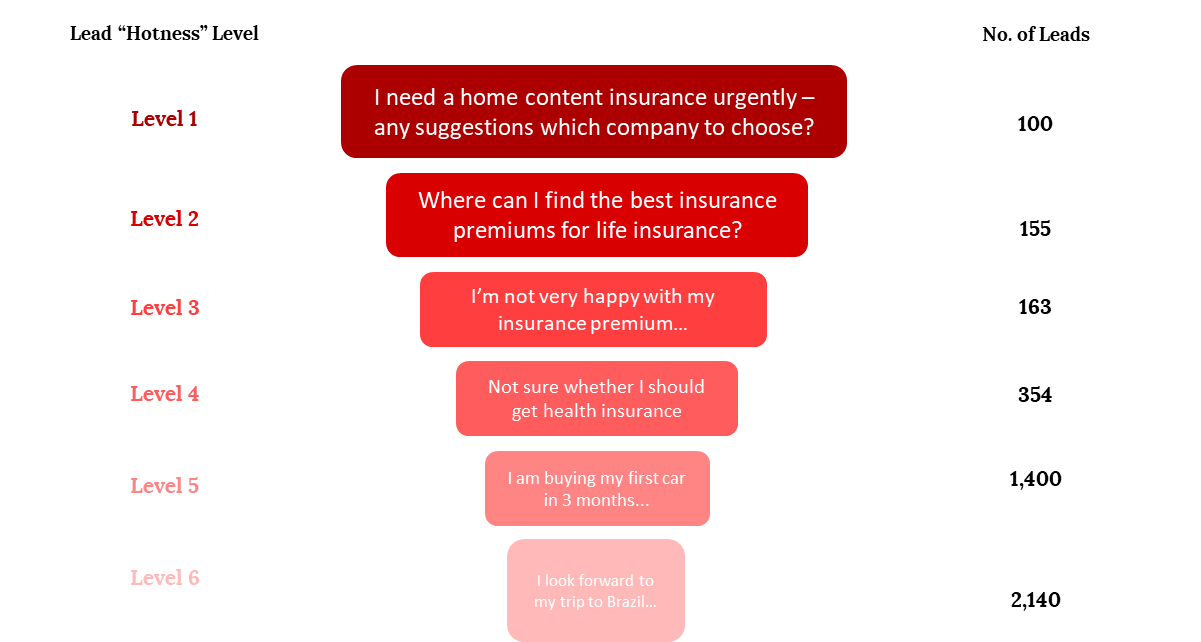
Blog Post
Purchase Intent on Social "Eats" Paid Search for Breakfast

Article titles are very important, they can make or break an article, so I usually consider multiple before I choose one. Here are the ones that did not make it this time:
- 1. The sales lead generation approach that beats Google Adwords
- 2. Is it possible to get better sales leads than those from Google Adwords?
- 3. Does it get any better than Google Adwords?
- 4. How to dramatically improve your sales lead generation
- 5. Search leads are lame compared to expressed purchase intent
- 6. Discover a new source for leads and increase your conversion rate
On to our topic, there is a phrase I first heard from a friend in Poland - who probably got it from Arthur H. “Red” Motley or Peter Drucker (the famous business author), or even IBM’s Thomas Watson: “nothing happens until someone sells something”. These were all business people and they obviously meant this phrase solely in a business context, but I think the phrase is true in a much broader sense.
Think about it; if you are a kid you sell how much you want that toy to your parents, if you are a teacher you sell the importance of education to your students, if you are a priest you sell your religion to your community, if you are a politician you sell your plan to the voters... you get the idea. “Selling” goes beyond trading products or services for money. So when Drucker says “nothing happens...” it looks like literally nothing happens; these business gurus have elevated themselves to deep philosophers by sharing this universal truth with the world, probably unknowingly.
This article is about generating good sales leads that easily convert to a sale. It is about finding leads deep in the sales funnel, ideally just one small nudge away from buying.
I usually try to provide some structure to make it easier to scan and decide what to read in more detail; In this piece I will describe the lead sources, then talk about the lead generation process, spend some time on conversion and finish off with how purchase intent on social media or on the public web works.
Lead Sources:
At the highest level there are two types of leads:
- 1. Inbound
- 2. Outbound
People often refer to inbound lead generation as “pull” marketing; in other words the lead finds an offer and proactively reaches out to a sales organisation inquiring about the product or service with the intent to buy. An inbound marketing plan involves great SEO (search engine optimisation), SEM (search engine marketing, otherwise known as paid search), affiliate marketing, brand ambassadors - ranging from nano influencers to celebrities, as well as other types of advertising (online and offline) and digital content sharing. This of course applies to online leads, the 100% offline purchase path is simpler: watch a TV ad, go to a brick and mortar store and buy the product.
Outbound lead generation, also known as “push” marketing, involves reaching out to the prospects with an offer, whether using email campaigns or cold calling; I personally prefer warm calls. Companies usually use their own CRMs to contact existing clients and leads, they may buy lists of possible leads who consented to being contacted, or they may even hire companies that already have access to relevant leads and pay them to contact them with their offering.
Lead Gen:
The cool way to say lead generation process: Lead Gen. Incidentally, I recently learned from a much younger person that it is not cool to say ‘cool’ anymore. Go figure.
The lead generation and conversion process is simple:
- - Find a lead
- - Qualify it
- - Score it (see Fig. 1)
- - Make contact
- - Nurture it
- - Convert it

Fig 1.
Admittedly finding, qualifying, and contacting a lead is the easy part; the difficult part is to nurture the lead and actually sell something.
Conversion:
I have seen claims that between 7 and 11 touchpoints are needed to go from an unaware lead to a converted one to a customer. This is why multi-channel marketing makes a lot of sense.
Imagine a B2B lead receiving a cold email with an offer from an unknown company; they don’t open the email but the subject line and the company name sort of registers in their mind. Then on the same day a sponsored post appears in their Facebook newsfeed - now they are trying to remember why this company name is familiar; when the same post appears in their LinkedIn and Twitter feed they start wondering which company this is, and what they do exactly. Up until this point we have four touchpoints and counting. A week later they receive another email from the same company, only now they actually open it because they are curious… ’these guys are everywhere’ is the dominating thought in their mind. Touchpoints six and seven are articles that come up when the prospect “googles” the company name. In case you are wondering there is no magic in appearing in your leads’ social media feeds; it’s all a part of the advertising options each platform offers. All you need to find and target them is the email address of the lead (which you should already have if you included them in your email campaign) that will be matched with the email address they used to sign up.
This lead was nurtured to the point that it now becomes an inbound lead when they land on let’s say the listening247 website and request a free online consultation. From then on, a request for a proposal is solicited, one is sent, negotiated and closed. Job done!
Purchase Intent on Social:
A typical path to purchase or sales funnel starts with awareness, then interest, followed by consideration, intent, evaluation and purchase (see Fig. 2 below).

Fig 2.
Google search, which is considered a source of qualified and mature leads, may indicate interest or consideration on behalf of the person searching. Both funnel stages come before purchase intent, and thus if there was a way to identify all the leads who intend to buy from a product category before intent is explicitly expressed, it brings us a big step closer to completing a purchase. The deeper we go in the sales funnel the more difficult it is to nurture and convert leads to the next stage; this is why if we can find a lead expressing purchase intent online it saves us tonnes of money and resources needed to nurture them from awareness to the next point in the funnel.
All you need is a social media listening tool that can accurately find people who express purchase intent online and has a machine learning capability to score the leads appropriately (see Fig. 1). Here is how it works:
- 1. Define keywords to harvest posts in any language from online sources
- 2. Clean the data i.e. eliminate the “noise” by getting rid of the irrelevant posts
- 3. Score them based on “hotness”
- 4. Feed them to a custom dashboard or through an API to a CRM app for a social media centre (similar to a call centre) to prioritise and contact leads on whichever channel a post is found and nurture them further until the deal is closed. For each lead score a different approach might be applicable.
As ever I am keen to engage in a conversation with you to compare notes, answer questions and ask some as well. Do contact me @DigitalMR_CEO or by email.